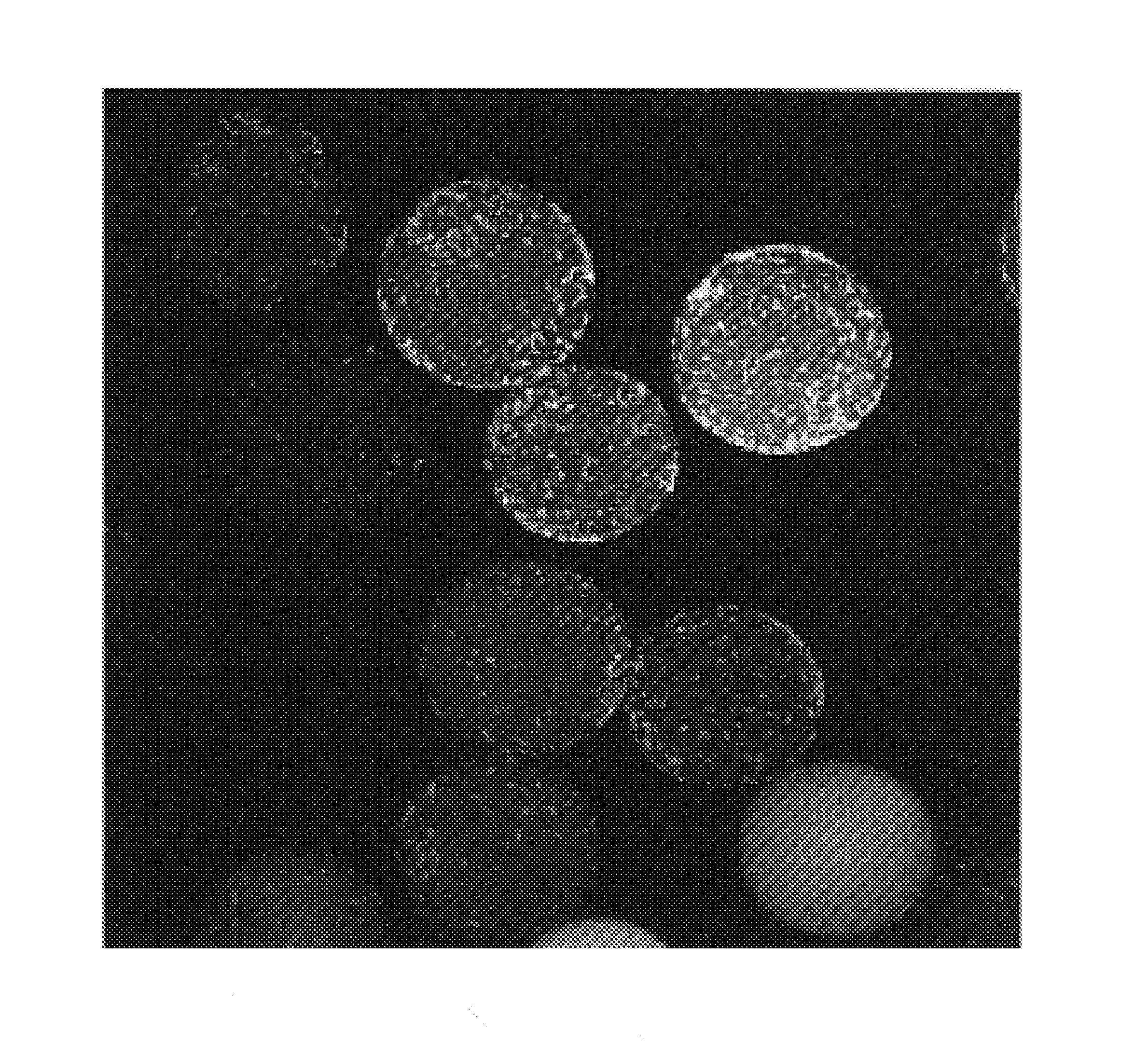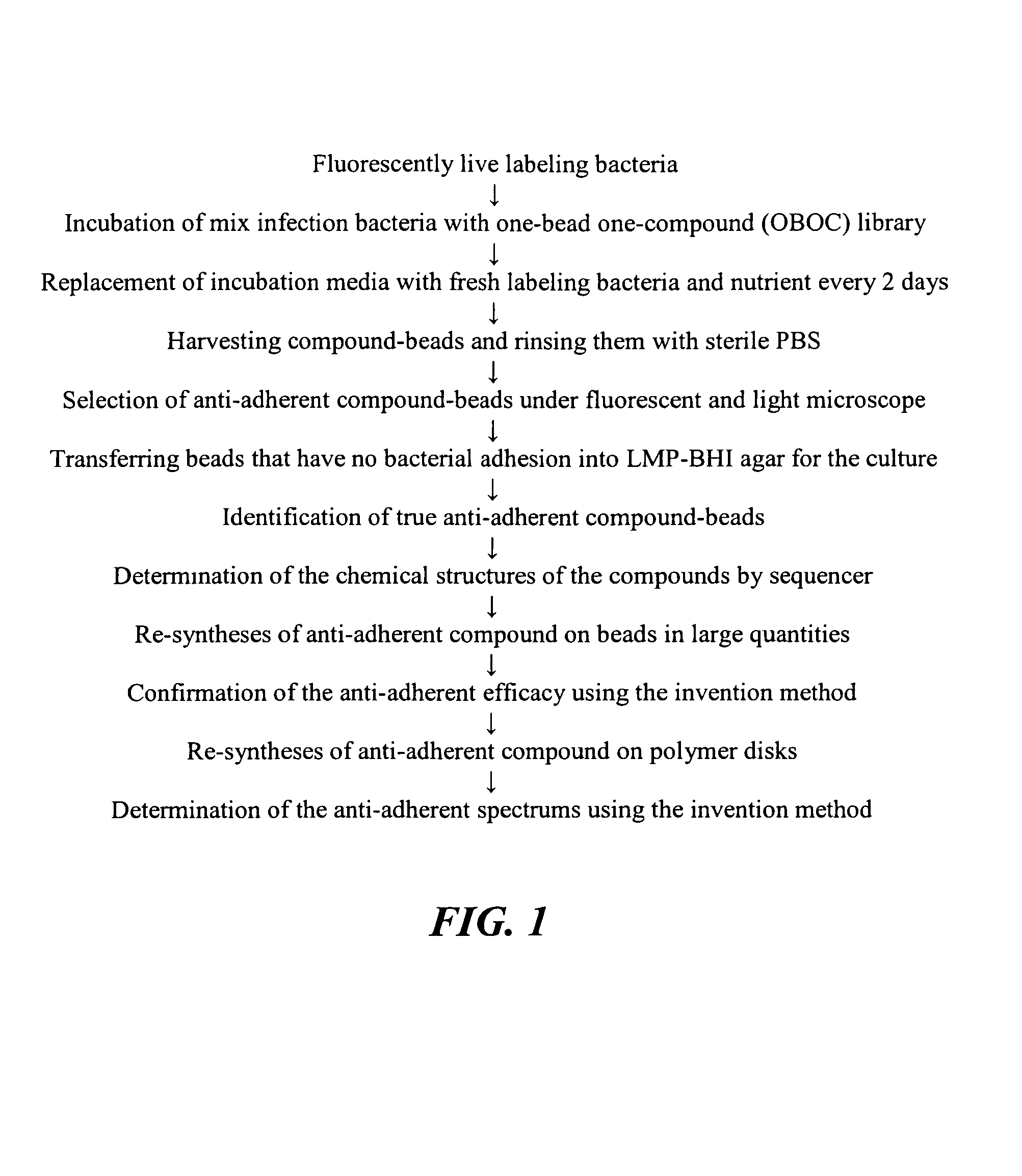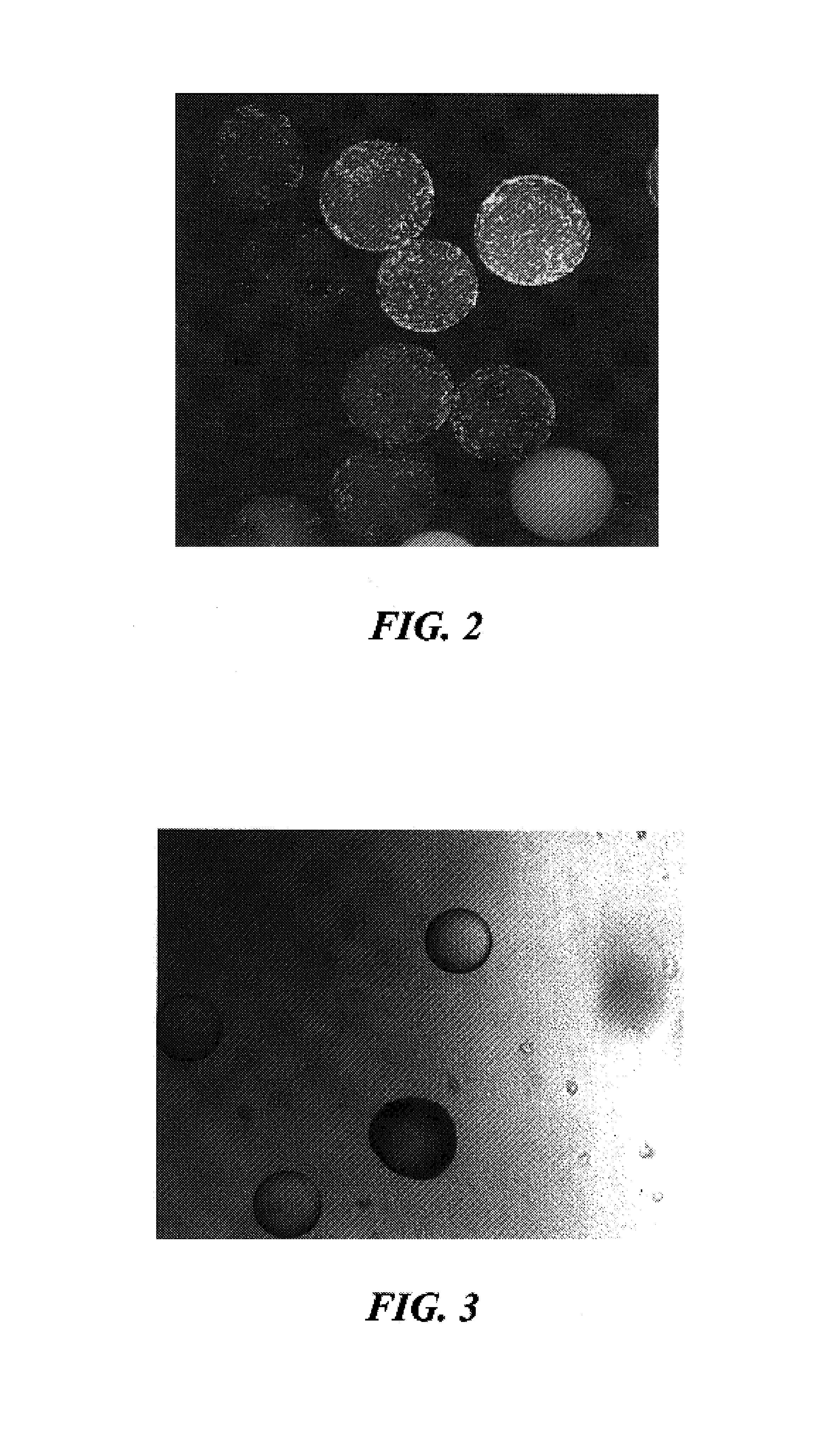Method for screening anti-adherent compounds on polymers for preventing biofilm formation
a polymer and anti-adherent technology, applied in the field of screening anti-adherent compounds on polymers for preventing biofilm formation, can solve the problems of inability to achieve adhesion, failure of implanted devices, and limited number of simple and reliable methods
- Summary
- Abstract
- Description
- Claims
- Application Information
AI Technical Summary
Problems solved by technology
Method used
Image
Examples
Embodiment Construction
[0015]The embodiment of the invention includes a method, referred to as the live bacterial labeling assay, for screening a One-bead One-compound combinatorial library for the compounds that can block bacterial adhesion and consequently prevent biofilm formation as shown in FIG. 1. The methods of identification and isolation of anti-adherent compounds under light and fluorescent microscope are also described.
[0016]A One-bead One-compound combinatorial library is prepared using the ‘split synthesis’ approach described in Lam et al. (1991, Nature 354: 82-84). The compounds of the library may be peptides, small molecules, oligonucleotide, or other types of molecules. An example of a suitable library is a topographically segregated OBOC library is created according Wang et al with some modification (2005, J Pept Res 65 (1), 130-8). The library containing —NH—Xi—X2—X3—X4—X5—X6—X7—X8-Cys (S—CH2CO—)—NH2—O, where “C” is D-cyctine, —NH is acetic acid pre-conjugated by nucleophilic attack of b...
PUM
 Login to View More
Login to View More Abstract
Description
Claims
Application Information
 Login to View More
Login to View More - R&D
- Intellectual Property
- Life Sciences
- Materials
- Tech Scout
- Unparalleled Data Quality
- Higher Quality Content
- 60% Fewer Hallucinations
Browse by: Latest US Patents, China's latest patents, Technical Efficacy Thesaurus, Application Domain, Technology Topic, Popular Technical Reports.
© 2025 PatSnap. All rights reserved.Legal|Privacy policy|Modern Slavery Act Transparency Statement|Sitemap|About US| Contact US: help@patsnap.com



